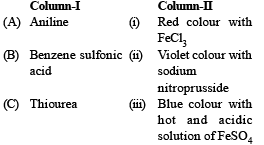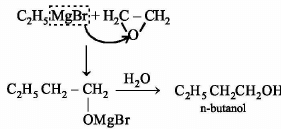NEET Practice Test - 21 - NEET MCQ
30 Questions MCQ Test - NEET Practice Test - 21
Among the following pairs of ions, the lower oxidation state in aqueous solution is more stable than the other, in
The correct order of increasing [H3O+] in the following aqueous solutions is
The hybridization of atomic orbitals of nitrogen in NO2+ , NO2- and NH4+ are
Which of the following has correct for increasing basic strength?
Options
(a) MgO < BeO < CaO < BaO
(b) BeO < MgO < CaO < BaO
(c) BaO < CaO < MgO < BeO
(d) CaO < BaO < BeO < MgO
The unusual properties of water in the condensed phase (liquid and solid states) are due to the
Which one of the following statements concerning lanthanide elements is false?
The hypothetical complex chlorodiaquotriammine cobalt (III) chloride can be represented as
For the compoundsCH3Cl, CH3Br, CH3I and CH3F, the correct order of increasing C-halogen bond length is:
The ammonia (NH3) released on quantitative reaction of 0.6 g urea (NH2CONH2) with sodium hydroxide (NaOH) can be neutralized by:
Aqueous solution of group 2 is precipitated by adding Na2CO3, then this precipitate is tested on flame, no light in visible region is observed , this element can be
A reaction at 1 bar is non–spontaneous at low temperature but becomes spontaneous at high temperature. Identify the correct statement about the reaction among the following:
When CH3Cl and AlCl3 are used in Friedel-Crafts reaction, the electrophile is
Which of the following statements about the advantage of roasting of sulphide ore before reduction is not true?
Which of the following metal ions will form complexes with the same magnetic moment and geometry irrespective of the nature of ligands?
Enthalpy and entropy change for a chemical reaction are –2.5 × 103 cals and 7.4 cals deg–1 respectively. At 25°C the reaction is:
One litre of 1 M CuSO4 solution is electrolysed.
After passing 2 F of electricity, molarity of CuSO4 solution will be
Which is not correct regarding the adsorption of a gas on the surface of a solid?
Match the organic compounds in column-I with the Lassaigne’s test results in column-II appropriately:

The fraction of total volume occupied by the atoms present in a simple cube is
Which of the following may be considered to be an organometallic compound?
Which of the following statements is incorrect regarding benzyl chloride?


























